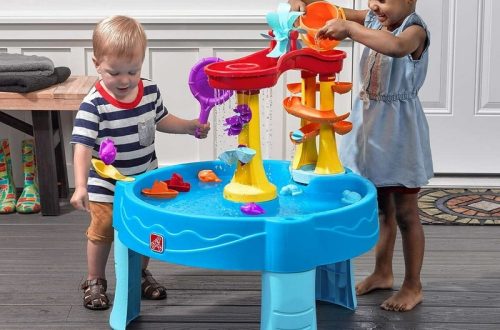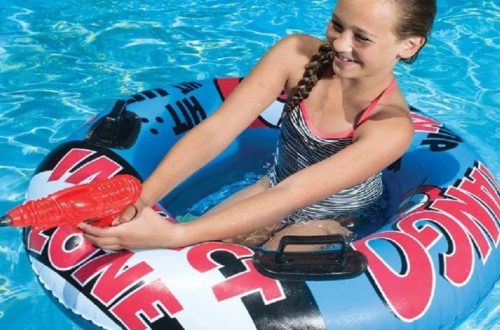Part 1: The Importance of Educational Toys for 3-Year-Olds
1. Cognitive Development:
Educational toys serve as instrumental tools in stimulating a child’s cognitive development, a pivotal aspect during the formative early years of their life. At the age of three, children are at a critical stage of brain development, and interactive toys play a significant role in fostering essential cognitive skills. These toys provide valuable opportunities for children to engage in activities that enhance their problem-solving skills, memory, and language development. Playing with educational toys encourages children to think critically, process information, and make decisions, nurturing their cognitive abilities and preparing them for future learning experiences. Interactive toys also offer a platform for children to refine their memory skills, as they recall and apply new information during play.
Furthermore, these toys can support language development by providing exposure to new words, concepts, and communication opportunities, setting the stage for enhanced linguistic abilities. By engaging with educational toys, children can actively participate in activities that contribute to their cognitive growth, laying a solid foundation for their ongoing development and learning trajectory.
2. Creativity and Imagination:
Educational toys play a crucial role in fostering imaginative play, an integral component of a child’s overall development. Toys that encourage creative thinking and pretend play provide 3-year-olds with opportunities to delve into their imagination, explore their emotions, and express themselves in a nurturing environment. Through imaginative play, children can engage in role-playing scenarios, using their creativity to invent storylines and assume various roles, which aids in the development of their social and emotional skills.

By participating in pretend play, children develop an understanding of social dynamics, cooperation, and empathy, as they navigate different roles and scenarios, enhancing their ability to interact with others. Additionally, imaginative play allows children to process and express their emotions, aiding in their emotional development and providing an avenue for self-discovery. These activities not only cultivate a child’s creative and imaginative capacities but also contribute to their overall well-being by providing a safe and enjoyable platform for self-expression and exploration.
Part 2: Types of Educational Toys for 3-Year-Olds
1. Building Blocks and Construction Sets:
Building blocks and construction sets offer numerous benefits for 3-year-olds, making them ideal educational toys for this age group. These toys provide an excellent platform for promoting the development of fine motor skills, as children manipulate and handle the blocks, enhancing their hand-eye coordination and finger dexterity. Furthermore, by engaging with building blocks, children are encouraged to explore concepts such as spatial awareness and problem-solving, as they learn to arrange and fit the blocks together to create stable structures. This process fosters critical thinking and analytical skills, as children experiment with various combinations and designs.
Additionally, building blocks encourage creativity and imagination, serving as a blank canvas for children to construct their own unique creations and designs, allowing them to express their ideas and explore their artistic inclinations. Through these activities, children can engage in open-ended play, developing independence, and nurturing their inventive capabilities. Overall, building blocks and construction sets provide a comprehensive and enriching learning experience for 3-year-olds, supporting their cognitive, physical, and creative development.
2. Puzzles and Shape Sorters:
Puzzles and shape sorters are invaluable tools for aiding 3-year-olds in honing their cognitive skills. Through engaging with these toys, children develop crucial abilities such as spatial reasoning and hand-eye coordination, as they manipulate puzzle pieces and sort shapes into corresponding slots. This process encourages children to analyze shapes, sizes, and orientations, fostering an understanding of spatial relationships and enhancing their problem-solving skills. Additionally, these toys help in teaching children about shapes, colors, and patterns, providing a hands-on approach to learning these fundamental concepts. Moreover, completing a puzzle or sorting shapes correctly provides a sense of accomplishment, boosting children’s confidence and self-esteem. Such activities also promote perseverance and patience as children work through the challenges presented by the puzzles and shape sorters. Ultimately, these toys not only support the cognitive development of 3-year-olds but also offer a rewarding and enjoyable learning experience.

Part 3: Choosing the Right Educational Toys for 3-Year-Olds
1. Safety:
When choosing educational toys for 3-year-olds, prioritizing safety is paramount. It’s crucial to ensure that the selected toys are non-toxic and free of harmful substances, as young children often explore objects with their mouths. Additionally, attention should be paid to the size of the toys, making sure they don’t contain small parts that could pose a choking hazard, as 3-year-olds are still learning about object exploration and manipulation. Verifying that the toys have passed safety standards for children’s products, as indicated by relevant certification marks, offers additional reassurance. Furthermore, inspecting the toys for any potential sharp edges or points can prevent accidental injuries during playtime, helping to create a safe and secure environment for the child’s exploration and learning. By prioritizing safety when selecting educational toys, caregivers can ensure that children can engage and learn with peace of mind, fostering a positive and secure play experience.
2. Educational Value:
When deciding on educational toys for 3-year-olds, it’s important to seek items that offer clear educational value. Such toys should actively promote cognitive development, language skills, physical dexterity, or other fundamental abilities. It’s beneficial to consider the specific skills or concepts that a toy is intended to enhance, ensuring that the chosen toys align with a child’s developmental needs and interests. For instance, if a child shows an interest in building and construction, toys that encourage spatial awareness and problem-solving, such as building blocks or shape-sorting puzzles, could be particularly suitable. On the other hand, if a child displays a curiosity for language and communication, storybooks, alphabet blocks, or interactive toys with language-based activities would be beneficial. By selecting educational toys that correspond with a child’s unique developmental stage and interests, caregivers can provide enriching, tailored experiences that support their overall growth and learning.

Part 4: The Benefits of Educational Toys for 3-Year-Olds
1. Enhanced Learning:
Educational toys offer an interactive and hands-on approach to learning, providing 3-year-olds with a more engaging and effective alternative to traditional teaching methods. Through play, children can actively participate in the learning process, allowing them to absorb new information in a fun and enjoyable manner. This interactive experience facilitates a deeper understanding of concepts and skills as children observe, experiment, and manipulate the toys, igniting their curiosity and instilling a love for learning. By engaging with educational toys, children can explore and discover at their own pace, tailoring the learning experience to their individual interests and learning styles, fostering a sense of empowerment and autonomy. This hands-on approach not only enhances a child’s retention of knowledge but also promotes problem-solving, critical thinking, and creativity, providing a well-rounded educational experience that lays a strong foundation for their ongoing development.
2. Long-Term Development:
The skills and abilities that children develop through playing with educational toys can have a lasting impact on their overall development. By stimulating cognitive, emotional, and social growth at a young age, educational toys can set a strong foundation for future academic success and personal well-being.
In conclusion, educational toys play a crucial role in inspiring and nurturing the development of 3-year-olds. By providing opportunities for cognitive growth, imaginative play, and skill-building, these toys can have a profound impact on a child’s early years and lay the groundwork for a lifetime of learning and development. When choosing educational toys for 3-year-olds, it’s essential to prioritize safety, consider the educational value of the toys, and focus on the long-term benefits they can offer. With the right toys and a supportive environment, 3-year-olds can thrive and explore the world around them with curiosity and enthusiasm.



